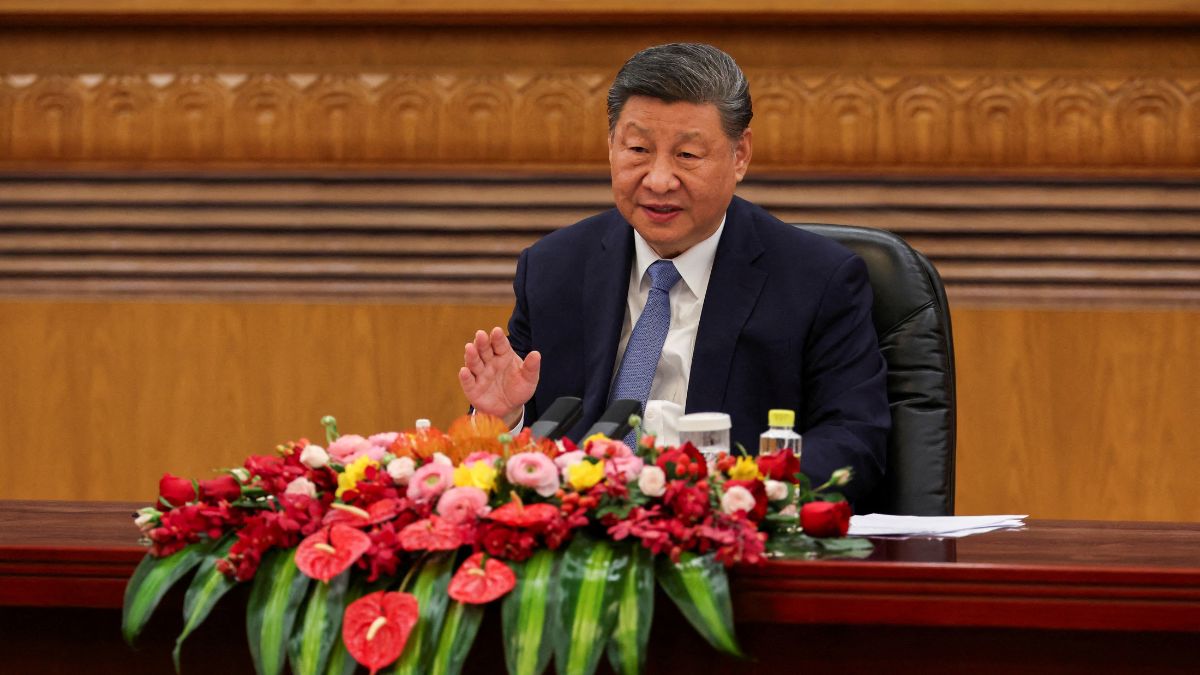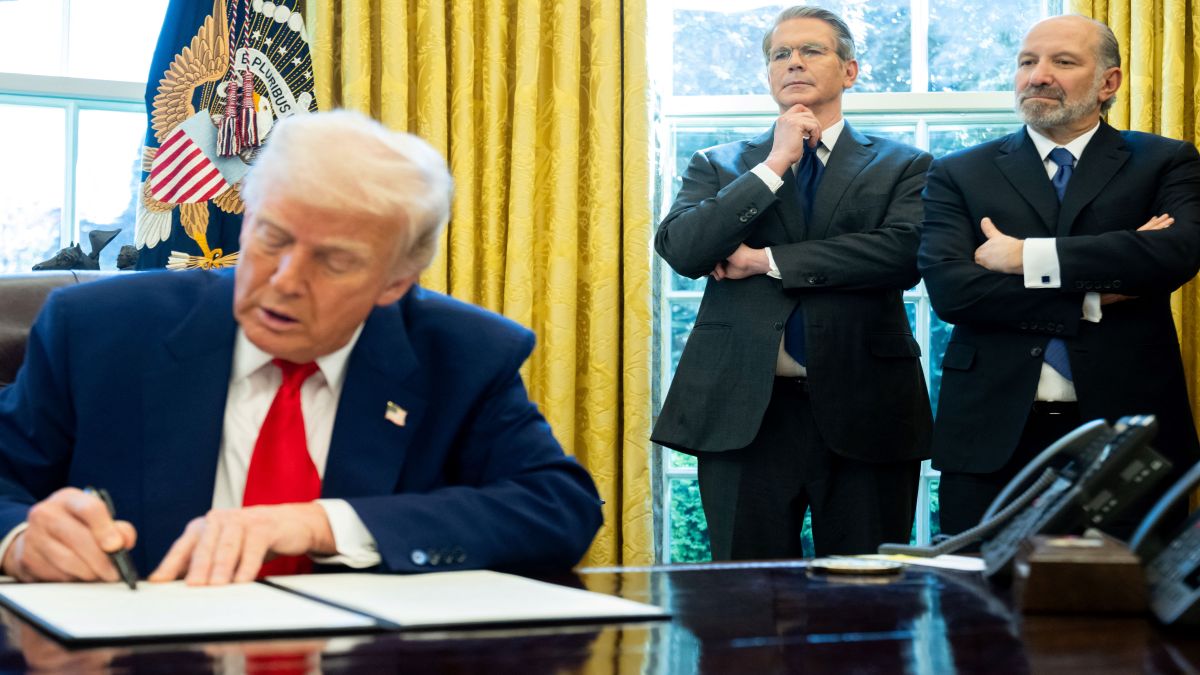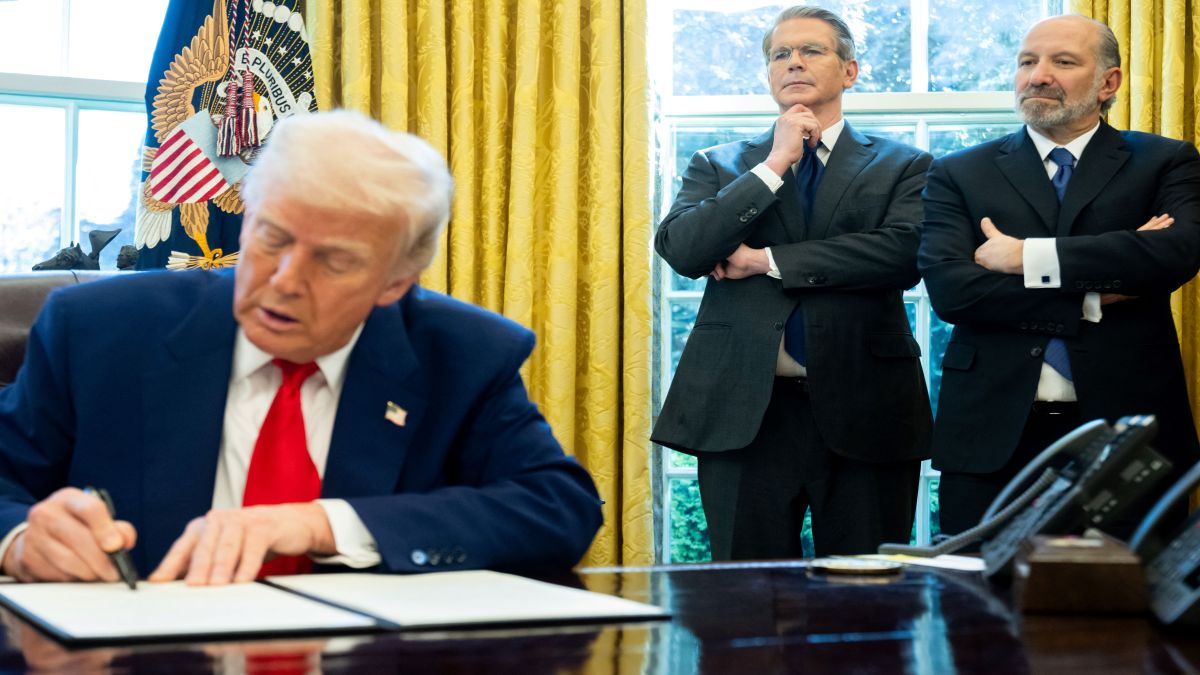In a move that seemed inconceivable just one day before, US President Donald Trump has temporarily suspended the bulk of his sweeping tariffs — except those targeting China.
The 90-day pause applies to over 75 nations that had negotiated with Washington and avoided retaliatory measures, Trump said, explaining the rationale behind the temporary reprieve.
During this window, a universal reciprocal tariff of 10 per cent will remain in effect for most countries.
However, the pause stops sharply at China’s doorstep. Trump announced an immediate and sharp escalation of tariffs on Chinese imports, raising the levy from 104 per cent to a staggering 125 per cent.
Trump justified the move by citing Beijing’s retaliatory measures, which now include an 84 per cent tariff on US goods.
He also took to Truth Social to criticise China’s approach to trade: “Based on the lack of respect that China has shown to the World’s Markets, I am hereby raising the Tariff charged to China by the United States of America to 125%, effective immediately. At some point, hopefully in the near future, China will realise that the days of ripping off the US and other countries, is no longer sustainable or acceptable.”
He added, “China wants to make a deal. They just don’t know how quite to go about it… President Xi Jinping is a proud man. They don’t know quite how to go about it, but they’ll figure it out.”
What prompted the tariff pause — and why China was excluded
The sudden pause in tariffs for most countries comes after weeks of intense lobbying by Republican allies and corporate leaders who were alarmed by the rising threat of a global trade war and potential recession.
Despite repeated calls to change course, Trump had been adamant that his policies would remain unchanged. However, insiders say it was internal warnings from the Treasury Department that ultimately triggered the move, reported CNN.
US Treasury Secretary Scott Bessent reportedly flagged concerns over a worsening selloff in the US bond market.
Trump, addressing reporters shortly after the announcement, hinted at the spontaneous nature of the decision: “The bond market is very tricky, I was watching it. The bond market right now is beautiful. But yeah, I saw last night where people were getting a little queasy… We wrote it up from our hearts, right? It was written from the heart, and I think it was well written too, but it was written from the heart.”
“I thought that people were jumping a little bit out of line…They were getting yippie, you know, they were getting a little bit a little bit afraid. You have to be flexible,” he added.
Though most nations get relief, the escalation against China underscores a strategic pivot toward a more narrowly focused trade battle, rooted in longstanding grievances.
Why China remains the main target
This isn’t just about economic retaliation — it’s about completing the unfinished business of Trump’s first term. “We didn’t have the time to do the right thing, which we’re doing now,” Trump told reporters, referring to his first-term efforts to rewire global trade structures.
For Trump, the ultimate goal is to dismantle what he views as an outdated global economic order that relies too heavily on China as the manufacturing hub of the world, reported BBC.
Despite earlier rounds of tariffs under both Trump and Joe Biden, China’s export-driven economy remains formidable. The country now produces 60 per cent of the world’s electric vehicles and 80 per cent of EV batteries.
Trump’s new strategy signals a direct challenge to China’s economic model. Beijing’s heavy export dependence and its guarded domestic market are seen as critical points of contention. Washington wants a systemic overhaul, something that may be politically unthinkable for Chinese leadership.
But the US position is equally ideological. Trump often promotes tariffs not just as a means to exert pressure but as a self-contained benefit. He views protectionist measures as a tool to boost domestic manufacturing, reduce foreign dependence, and reshape global supply chains to favour American industry.
How Beijing has reacted
China’s response has been swift and multifaceted. Tariffs on all US imports have now surged to 84 per cent, while China has filed another formal complaint with the World Trade Organisation (WTO).
“[Washington’s] 50 per cent tariff increase is a mistake on top of a mistake, highlighting the unilateral bullying nature of the US measures,” the commerce ministry said.
“Beijing will firmly safeguard its legitimate rights and interests in accordance with the WTO rules, and resolutely uphold the multilateral trading system and the international economic and trade order,” a spokesperson added.
In addition to trade measures, China has blacklisted 18 American firms and issued travel and education warnings.
The Chinese culture and tourism ministry advised Chinese citisens to “travel with caution” to the US, while the education ministry urged students to assess safety risks in light of a new Ohio bill aimed at curbing foreign influence in state universities.
As diplomatic tensions mount, Chinese state media has projected a strong sense of resilience. National broadcaster CCTV highlighted the global opposition to the US tariffs and portrayed Beijing as ready to weather the economic turbulence.
With inputs from agencies


)
)
)
)
)
)
)
)
)



